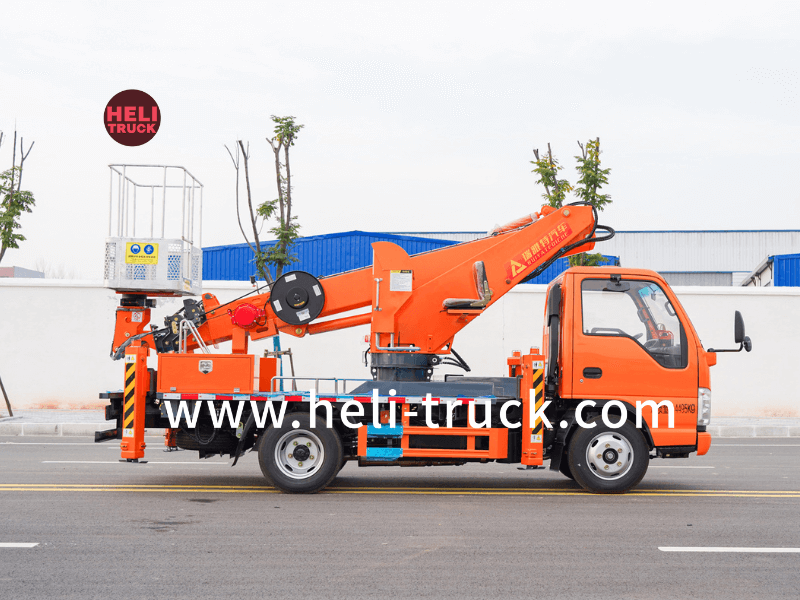Maximizing Efficiency Understanding Garbage Compactor Truck Capacity

Introduction
Garbage compactor trucks play a crucial role in waste management systems worldwide, efficiently collecting and compacting waste to reduce its volume before disposal. One of the key factors that determine the effectiveness of these trucks is their capacity - the amount of waste they can hold and compact in a single trip. In this article, we will delve into the importance of garbage compactor truck capacity, explore the different types of compactor trucks available, and discuss strategies for maximizing efficiency through proper capacity utilization.
Understanding https://www.heli-truck.com/guide-to-buying-fire-trucks-types-tips/ refers to the volume of waste that the truck can hold and compact. This capacity is typically measured in cubic yards or cubic meters and can vary significantly depending on the size and design of the compactor truck. Larger compactor trucks generally have higher capacities, allowing them to collect and compact more waste in a single trip.
The capacity of a garbage compactor truck is a critical factor in determining its efficiency and effectiveness in waste collection and disposal. Trucks with larger capacities can collect more waste before needing to unload, reducing the frequency of trips to disposal sites and minimizing fuel consumption and operational costs. Additionally, higher-capacity compactor trucks can help improve overall productivity by enabling crews to cover larger areas and collect more waste in a shorter amount of time.
Types of Garbage Compactor Trucks
There are several types of garbage compactor trucks available, each with varying capacities and designs to suit different waste management needs. The two main categories of compactor trucks are rear loader compactor trucks and side loader compactor trucks.
1. Rear Loader Compactor Trucks:
- Rear loader compactor trucks are the most common type of garbage compactor trucks used for residential waste collection.
- These trucks feature a rear-loading mechanism, where waste is loaded into the compactor through a rear opening.
- Rear loader compactor trucks typically have capacities ranging from 10 to 30 cubic yards, making them suitable for smaller to medium-sized waste collection routes.
2. Side Loader Compactor Trucks:
- Side loader compactor trucks are often used for commercial and industrial waste collection, as well as in areas with limited access for rear-loading trucks.
- These trucks have a side-loading mechanism, allowing waste to be collected from bins or containers along the truck's side.
- Side loader compactor trucks come in a range of capacities, from 20 to 40 cubic yards, making them ideal for larger waste collection routes and industrial applications.
In addition to rear loader and side loader compactor trucks, there are also front loader compactor trucks and roll-off compactor trucks available for specialized waste collection needs. Front loader compactor trucks are commonly used for commercial waste collection in urban areas, while roll-off compactor trucks are used for handling large volumes of construction and demolition waste.
Maximizing Efficiency Through Proper Capacity Utilization
To maximize the efficiency of garbage compactor trucks, it is essential to utilize their capacity effectively and optimize waste collection and compaction processes. Here are some strategies for maximizing efficiency through proper capacity utilization:
1. Route Planning:
- Efficient route planning is key to maximizing the capacity of compactor trucks and minimizing travel time and fuel consumption.
- By optimizing collection routes based on factors such as waste volume, location of collection points, and traffic conditions, waste management companies can ensure that compactor trucks operate at maximum capacity.
2. Load Optimization:
- Properly loading waste into the compactor truck is essential for maximizing its capacity and compaction efficiency.
- Waste should be compacted as tightly as possible to make full use of the available space in the truck and reduce the number of trips required for disposal.
3. Regular Maintenance:

- Regular maintenance of compactor trucks is crucial for ensuring optimal performance and capacity utilization.
- Maintenance tasks such as checking and repairing hydraulic systems, compactors, and loading mechanisms can help prevent breakdowns and downtime that can impact capacity and efficiency.
4. Training and Education:
- Providing training to compactor truck operators on proper waste handling and compaction techniques can help improve efficiency and capacity utilization.
- Operators should be familiar with the truck's capacity limits and compaction capabilities to ensure that waste is loaded and compacted effectively.
Conclusion
Garbage compactor truck capacity plays a vital role in the efficiency and effectiveness of waste collection and disposal operations. By understanding the importance of capacity, exploring the different types of compactor trucks available, and implementing strategies for maximizing efficiency through proper capacity utilization, waste management companies can improve operational performance, reduce costs, and contribute to a cleaner and healthier environment. Investing in the right compactor truck with the appropriate capacity and implementing best practices for capacity utilization are essential steps towards achieving sustainable waste management practices.
